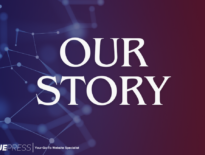The 5 Essential Stages of the Website Development Life Cycle: Understanding the Process from Start to FinishDeveloping a website isn’t just about slapping together some pretty pages. It’s a meticulous, step-by-step process that needs careful thought and precision. From the initial planning to the final deployment, every stage plays a critical role in making your website functional, user-friendly, and successful.
The Website Development Life Cycle is a five-step journey that every website must undergo. It’s like a roadmap guiding you from the birth of a simple idea to a fully functional website. And guess what? We’re here to guide you through this exciting journey!
This cycle begins with planning, where you lay the groundwork for your website. Next comes design, where your ideas start taking shape. The third stage, development, is where all the magic happens, and your website starts coming alive. Then comes testing, to make sure everything works perfectly. Finally, the deployment stage is when your website is ready to make its grand debut on the World Wide Web.
So, if you’re curious about how to turn a simple idea into a stunning website, you’re in the right place! Let’s dive into the fascinating world of the Website Development Life Cycle.
The 5 Essential Stages of the Website Development Life Cycle
Building a website is like embarking on a thrilling adventure. You start with a blank canvas, and through a series of carefully planned stages, you bring your vision to life. In this article, we will take you on a journey through the 5 essential stages of the website development life cycle. So, fasten your seatbelts and get ready to discover the secrets of creating a successful website!
Stage 1: Planning

Before diving into the development process, it’s crucial to have a well-thought-out plan. During the planning stage, you will define the website’s goals, target audience, and key features. Conducting market research and competitor analysis will help you gain insights and identify opportunities to stand out from the crowd. Furthermore, creating a sitemap and wireframes will give you a blueprint for the website’s structure and layout.
Stage 2: Design

Once the planning stage is complete, it’s time to let your creativity flow. Design is all about making a lasting impression on your visitors. You’ll work on choosing the right color scheme, typography, and imagery that align with your brand identity. A well-designed website not only looks aesthetically pleasing but also enhances user experience, ensuring easy navigation and clear communication of your message.
Stage 3: Development

Now, it’s time to turn your visual design into a fully functional website. During the development stage, web developers bring your website to life using various programming languages and technologies. They focus on building responsive layouts, incorporating interactive elements, and ensuring smooth functionality across different devices and browsers. This stage requires attention to detail and strong coding skills to create a website that performs flawlessly.
Stage 4: Testing
Before launching your website to the world, thorough testing is essential to ensure everything works as intended. Testing involves checking for bugs, broken links, and compatibility issues. It also includes usability testing to evaluate how users navigate through your website and if they encounter any difficulties. By identifying and fixing any issues during this stage, you can provide a seamless user experience once your website is live.
Stage 5: Deployment

Finally, it’s time to unveil your masterpiece to the world. During the deployment stage, your website is uploaded to a server and made available to the public. This involves configuring domain names, hosting, and ensuring all files are in place. Additionally, deploying a website involves search engine optimization (SEO) techniques to improve its visibility in search engine results, driving organic traffic to your site.
And there you have it! The 5 essential stages of the website development life cycle. From the initial planning to the grand deployment, each stage plays a crucial role in creating a successful website. So, strap on your creative thinking hat, get your hands dirty with coding, and let your website be the star of the online world!
Conclusion
In conclusion, understanding the five essential stages of the website development life cycle is crucial for a successful website project. From the initial planning phase to the final deployment, each stage plays a vital role in creating a well-designed and functional website.
During the planning stage, thorough research and analysis are conducted to identify the goals, target audience, and desired functionalities of the website. This stage sets the foundation for the entire development process.
The design stage focuses on creating visually appealing and user-friendly website layouts. It involves the selection of appropriate colors, fonts, and imagery that align with the brand identity and resonate with the target audience.
Development is the stage where the website truly comes to life. Skilled developers write the code and integrate various features and functionalities to ensure a smooth user experience. This stage involves meticulous attention to detail and rigorous testing to ensure optimal performance.
Speaking of testing, it is a critical stage in the website development life cycle. Thorough testing is conducted to identify any bugs, errors, or inconsistencies that may hinder the website’s functionality. This stage ensures that the website is compatible across different devices and browsers.
Finally, the deployment stage marks the exciting moment when the website is launched and made available to the world. This stage involves transferring the website files to the server, configuring domain names, and ensuring proper functionality.
By understanding and following these five stages, you can ensure that your website development project progresses smoothly and achieves its intended goals. So, whether you’re planning to create a personal blog or a company website, remember the importance of the website development life cycle and the impact it can have on your digital presence.




